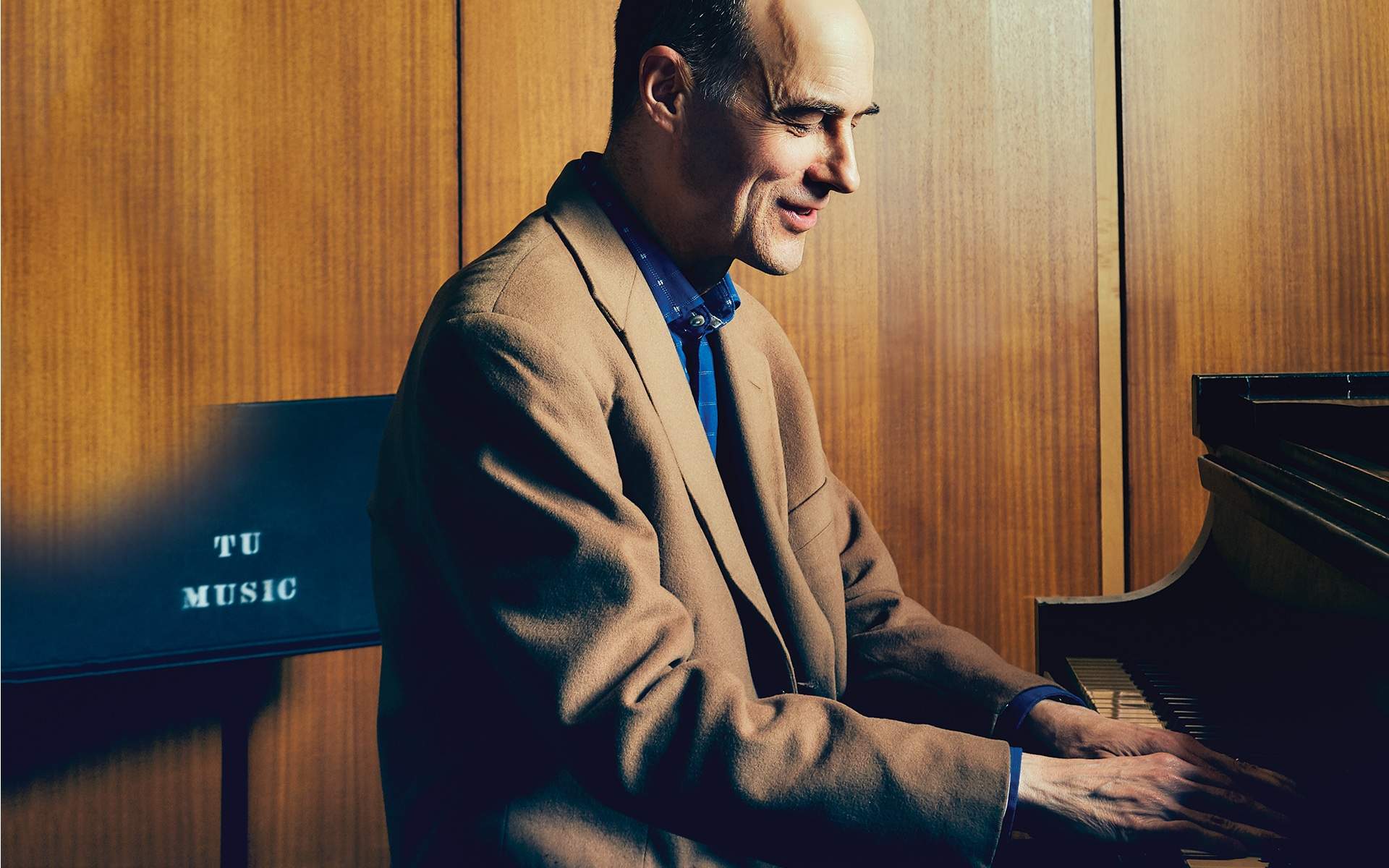Alexander deVaron teaches music theory and composition at Temple University’s Boyer College of Music and Dance in Philadelphia. For the past 30 years, he has taught mindfulness in the Philadelphia area, including a stress management course for the Penn Program for Mindfulness at the University of Pennsylvania. In recent years, deVaron has merged his two passions, music and mindfulness, into a monthly drop-in workshop called “Mindfulness and Song.”
Why do you meditate?
I’m not one of those fortunate people who was just born into a sane and well-adjusted frame of mind. As a teenager, I had obsessive suicidal thoughts. I can still become very negative very quickly. With mindfulness, it’s not about getting rid of or never having those thoughts. It’s about disempowering them so that when they happen, you can just say, “Oh, there’s that hangover from when I was 16.”
Was music and singing a source of healing?
My mother was a classical musician and my sister is a singer-songwriter, so I grew up around people singing and playing the piano and guitar. But I was not particularly a singing type. In my early 20s, I gravitated toward the heady stuff—theory and composition.
When did your passion for singing crystallize?
I was in graduate school at Indiana University, taking voice lessons. One day, I was in a practice room, singing, “It was a lover and his lass, with a hey, and a ho, and a hey nonino”—you know, one of those funny English songs. And I just felt so good afterward—my body felt great and my head felt clear. I remember thinking, “This is what I want to do.”
How do mindfulness and singing connect?
Mindfulness synchronizes body, speech, mind, and breath. If I sing de ba de ba du bum bum bum bum, my body and mind and breath are brought together—all to one dot of right now. When you’re completely in the moment, you feel the sheer enjoyment of being alive.
You’re also vibrating your body, massaging it with your voice—and the vibrations are literally opening your heart. Most of the time when I cry, I cry because I’ve been singing something: It just cracks the heart wide open.
That sounds peaceful.
It’s a kind of innocence or positive naïveté. We’re taught we can’t be naïve, that we need to be on our guard, because the world’s going to screw us if we’re not. That’s sad. So one thing that happens when you sing is that you let down your guard. Your mind is not divided. You’re not scanning for danger. You’re connecting with goodness and healthiness.
And in the workshop?
We start by noticing the bodily sensations of breathing. Then we incorporate sound-making by placing the attention on the sensations of the body singing. We sing “ah” in different registers. We sing “ah” and then “mmm” and then open up to “ah” again—noticing the way the body vibrates differently when the mouth is open or closed. We also focus on the sound of our individual voices and then, later in the session, on the voices of the group.
Eventually, I encourage people to move their chairs together and gradually form a circle. We sing rounds and folk songs—literally resonating together on a physical and psychological and emotional level.
And we stress listening, which always brings your body, speech, and mind back to the present—sounds happen only in the present.
How uplifting!
It’s pretty ordinary, too. We’re not singing Beethoven’s Ninth—we’re singing a round. No agenda. We just explore what happens when we put singing and mindfulness together. But things do start to shift: You don’t feel so stuck anymore. I remember thinking a few years ago, after finishing a round, “Wow, that’s one of the sweetest moments I’ve ever had.”






